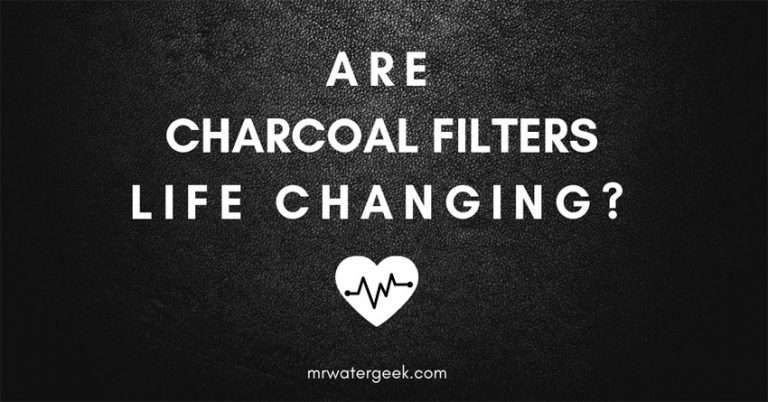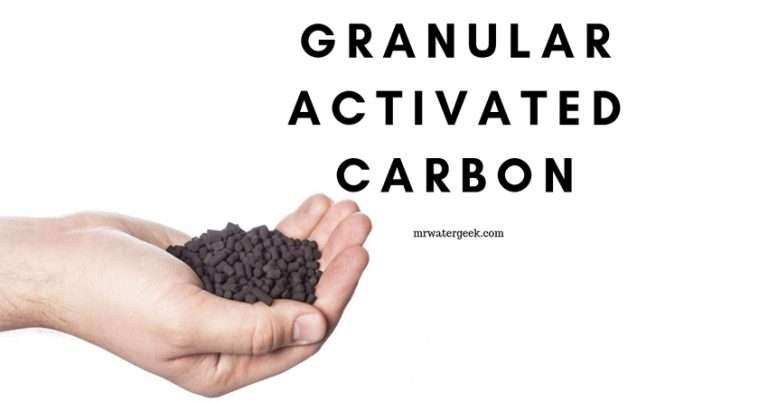The PROBLEM with Carbon Water Filters NO ONE Talks About
Issues and Problems with Carbon-Based Water Filters
![]() If the filter cartridge is left unused for an extended period, such as 4 weeks, it may become clogged and its contents may harden, especially if it hasn’t been soaked in water and allowed to dry. If this occurs, bacteria can potentially accumulate and multiply. While it’s unlikely to pose a health risk, it’s not an ideal situation.
If the filter cartridge is left unused for an extended period, such as 4 weeks, it may become clogged and its contents may harden, especially if it hasn’t been soaked in water and allowed to dry. If this occurs, bacteria can potentially accumulate and multiply. While it’s unlikely to pose a health risk, it’s not an ideal situation.
If this happens to be the case then simply flush the filter with water and soak it for at least 20 minutes. Repeat this until the water starts to move freely and easily through the filter(s).
![]() Following on from the previous points, charcoal water filters can not remove all types of pollutants. For instance, charcoal filters are not always very good at treating things like heavy metals (e.g., lead, arsenic), minerals, salts, microbes (e.g., bacteria, viruses), or dissolved solids. For these, other filtration methods may be necessary.
Following on from the previous points, charcoal water filters can not remove all types of pollutants. For instance, charcoal filters are not always very good at treating things like heavy metals (e.g., lead, arsenic), minerals, salts, microbes (e.g., bacteria, viruses), or dissolved solids. For these, other filtration methods may be necessary.
Why Carbon Water Filters Are The Best
A whole house charcoal filter should be your first choice because it is so good at removing things you find in everyday tap water. For instance, traces of chlorine and other types of common bacteria.
The natural charcoal filtration process doesn’t usually require electricity and tends to work with gravity. This means it can help you save money on things like electrical bills.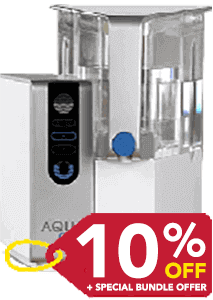
Because it is a natural filter method, you don’t need to worry about chemicals leaching into your drinking water.
Although carbon filters remove harmful bacteria from water, it doesn’t remove the healthy minerals and nutrients as is the case with distilled water.
This is a low maintenance filter method and doesn’t typically have too many maintenance issues.
There are so many different types of charcoal filters on the markets with lots of different variations and you also have the chance to customize. Whole house filters will usually pair charcoal filters with other filtration types like reverse osmosis to produce the purest clean drinking water.
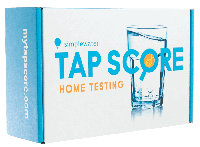 The important thing to note is that whole house charcoal-based water filters have many more advantages then disadvantages.
The important thing to note is that whole house charcoal-based water filters have many more advantages then disadvantages.
If your priority is to remove certain harmful substances, check that the filter you buy can deal with this. The fact is that most whole house filters wont just use activated charcoal, they will have different filtration stages.
The fact is that most whole house filters wont just use activated charcoal, they will have different filtration stages.
This means that anything you can’t remove with charcoal will be dealt with by another stage in the filtration process.
Why Are Charcoal Water Filters So Popular?
Charcoal water filters are a strange thing when you really think about it. So we use burnt wood to purify and filter water?
It seems like a weird concept until you realize how amazingly well this method of filtration actually works.
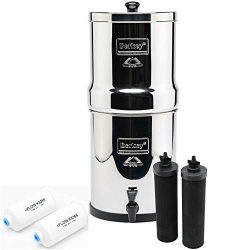 So the first thing to understand is that you can’t just use everyday charcoal to filter your water. But instead you have to use charcoal that is “activated”.
So the first thing to understand is that you can’t just use everyday charcoal to filter your water. But instead you have to use charcoal that is “activated”.
“Activation” itself happens when wood and other natural organic materials are heated together in a process that is oxygen-free.
Not only do charcoal water filters work effectively well, it’s been around for centuries and our ancestors used it to filter water for drinking.
If you’re currently researching the best water filter systems, you’ve probably come across charcoal filters on multiple occasions. Also, you’ll soon find that most water filters use this method in one way or another.
For instance, the average Brita Filter Jug makes use of charcoal filters at the core of their filtering process.
Why Does Charcoal Make a Good Filter?
Charcoal or carbon as it is sometimes called is a natural material that is porous. It is capable of attracting and holding lots of different harmful contaminants to itself.
The way to make regular charcoal ‘activated charcoal’ is to mix it with oxygen so that the millions of tiny pores between its carbon atoms open up.
This makes it work as a good water filter that is both natural and chemical free.
It’s natural filtering and purifying means that activated charcoal is commonly used for absorbing harmful substances and odorous liquids or gases.
A good example of this in action is when people put charcoal in their refrigerator as a way to rid it of any bad smells or odors.
However, one of the most common uses of activated charcoal is for water purification. It is by far one of the best methods of water filtration because it not only purifies water it also helps it retain healthy minerals.
History of Charcoal
The use of charcoal as fuel dates all the way back to the Sumerians and Egyptians. They would typically use charcoal as a fuel to help them manufacture bronze.
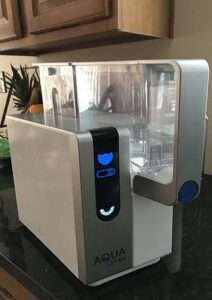 Both civilizations later discovered that they could also effectively use charcoal as a preservative.
Both civilizations later discovered that they could also effectively use charcoal as a preservative.
It was while using it as a preservative that they started to notice its anti-bacterial qualities. For instance, charcoal helps to prevent wood from rotting particularly if you bury it in wet soil.
Other useful uses and applications for charcoal began to reveal themselves over the following centuries that passed. As an example, people have found that charcoal can be used to block and seal up holes in ships.
Charcoal has also been used to scorch wooden barrels as a way to preserve the water as well as other things that might be stored in them.
There are a multitude of different charcoal uses today. But by far is it’s use as a water filter is the most popular.
Activated Carbon Adsorption
The main way that activated charcoal works is through adsorption. It adsorbs all pollutants from water through the process of “adsorption”.
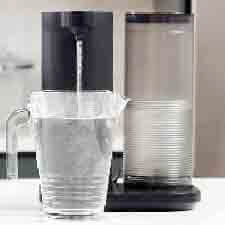 By ‘adsorption’ we are referring to the process of attracting ions, molecules and atoms from liquids.
By ‘adsorption’ we are referring to the process of attracting ions, molecules and atoms from liquids.
“Adsorption” is not the same thing as “absorption” because the particles are taken by the volume of the water instead of the surface.
This process of adsorption is what filters organic compounds out of water, compounds like chloramines, chlorine and even residual disinfectants.
Activated carbon filters are also capable of reducing the level of hazardous organic chemicals as well as many of the different man-made substances that appear in tap water.
![]()
DIY Activated Charcoal Water Filter
Knowing how to make your very own DIY charcoal water filter is a very useful life skill.
It might literally be a lifesaver in an emergency situation especially as you can’t really survive more than a few days without water.
This compares to the fact that you can live for 3 weeks without food. So here is a quick easy, step by step DIY guide.
Activated Charcoal Water Filter – Step by Step DIY Guide
- Either get charcoal (if you already have some at hand) or burn some wood until it becomes charcoal.
- Make sure the charcoal is completely cool if you actually make the charcoal yourself by burning wood.
- Once completely cooled, crush the charcoal into a powder form.
- Get something that is in the shape of a cylinder or make one by cutting the bottom off any bottle. So long as the container is bigger at the top and smaller at the bottom.
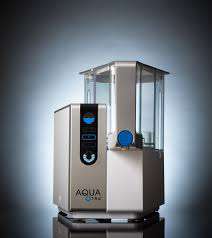
- Take the charcoal powder you have just crushed and put it very tightly into the container. Make sure that you still leave enough space at the top so you can add water to the container.
- Fit a tight piece of fabric over the larger and smaller openings (both ends). This is to stop the charcoal from spilling out from the top and further filter the water at the bottom. You can also use the bottle’s cap as an extra filter by making a hole in the cap.
- If the water runs through very quickly rather than dripping then it means that you need to fit the powder tighter and make the cap/fabric work harder to catch any sediments.
- Get another container at the bottom of the filter to catch all the clean filtered water that comes out of the bottom.
Extra Tip For Using a DIY Charcoal Water Filter
If the water that comes out doesn’t look very clean or clear then pour it back so that it can be re-filtered.
Also, boil the water at the very end just in case there are any extra bacteria in the water that you can’t see with the naked eye.
The bottom line is that if people throughout history and even your ancestors can do this, then so can you.
It’s a useful life skill that can come in handy in many situations like if your water filter breaks down, you run out of filter cartridges or some other emergency.
If you made a DIY charcoal water filter based on the guide provided here then please leave a comment below and tell me how you found it. Does it work? Is there a step missing? How does the water taste?![]()
What Are The Different Types of Charcoal Filters?
There are 2 different types of carbon filters in very broad terms. These are based on what is currently widely used in the filtration industry and present in the vast majority of charcoal filters on the market.
The 2 main types of carbon filters are:
- (i) GAC Granulated Active Carbon and
- (ii) PAC Powdered Activated Carbon.
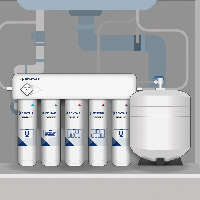 What is the main difference? Well, GAC (Granular Activated Carbon) filters have a very big surface to volume ratio. This means that it can easily filter larger amounts of water at any one time.
What is the main difference? Well, GAC (Granular Activated Carbon) filters have a very big surface to volume ratio. This means that it can easily filter larger amounts of water at any one time.
Meanwhile the PAC (Powdered Activated Carbon) is the complete opposite as it has a comparatively smaller ratio and both of these methods have their different uses.
But the bottom line is that they both use charcoal to filter your water. This means that they will effectively remove contaminants like bacteria, heavy metals and chemicals from the water.
1. PAC – Powdered Activated Carbon In Water Treatment
In technical terms, a PAC or powdered carbon block filter works by allowing the charcoal particles to retain the position relative to each other.
The result of this is that PAC filters prevent water channeling unlike the case with GAC water filters. There are 2 key things that you need to understand before choosing to use a powdered carbon filter:
- What is the particle size and distribution of the actual carbon? Smaller usually means it’s a PAC instead of a GAC.
- What is the length of the path water inside the carbon block?
You should take these into consideration and double check the quantity and quality that the manufacture has decided.
Understanding this will also help you decide if the PAC you intend to buy can handle what you need it to.
Powdered Activated Carbon In Water Treatment – Issues
Before talking about issues with powdered carbon filters, it’s important to note that they have many advantages when compared to GAC filters.
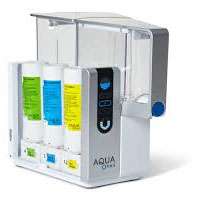 One of the biggest benefits of using a PAC is that the smaller particle size means that it has an enhanced capacity to filter out things that are also very small.
One of the biggest benefits of using a PAC is that the smaller particle size means that it has an enhanced capacity to filter out things that are also very small.
On the flip side, perhaps the biggest issue with the PAC water filter is that it adds resistance in the water flow rate through the carbon block thereby causing the water to flow very slowly.
The result of this can sometimes be problematic for the following reasons:
![]() PAC carbon filters are not able to remove every single type of contaminant that is present in your drinking water. This is in spite of it powerful activated charcoal filtration properties – unless it is designed to do so. Therefore you shouldn’t automatically assume that a PAC filter can filter certain things if it’s not listed on the package or a specific claim made by its manufacturer.
PAC carbon filters are not able to remove every single type of contaminant that is present in your drinking water. This is in spite of it powerful activated charcoal filtration properties – unless it is designed to do so. Therefore you shouldn’t automatically assume that a PAC filter can filter certain things if it’s not listed on the package or a specific claim made by its manufacturer.
![]() It has a very low flow rate, which means that it can take a long time to filter water unless you have a very specific make and model that processes this quicker. This is a common issue with most PAC filters and particularly for people that use gravity filters.
It has a very low flow rate, which means that it can take a long time to filter water unless you have a very specific make and model that processes this quicker. This is a common issue with most PAC filters and particularly for people that use gravity filters.
A very quick and easy way to avoid and deal with these issues is to know what contaminants are in your water so you know what you need the filter to remove.
You can do this by buying a water test kit. The second thing you can do is make sure the PAC filter you buy has a faster flow rate.
2. GAC Filters
GAC is short for Granulated Active Carbon filters and has a larger surface to volume ratio when you compare it to PAC filters.
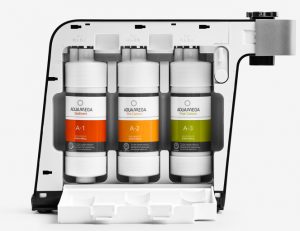 It typically comes in the form of a cylinder that carries the charcoal. The water passes through this cylinder and the contaminants stick to the carbon before allowing the filtered water to pass through.
It typically comes in the form of a cylinder that carries the charcoal. The water passes through this cylinder and the contaminants stick to the carbon before allowing the filtered water to pass through.
Because it works with activated charcoal, you get all the benefits of a healthy natural chemical-free filter but there are also some disadvantages too.
GAC Filter Issues
One of the biggest disadvantages of using a GAC filter is that when water goes through the filter it finds the least resistance.
This is typically in the loose carbon bed (i.e. charcoal in a powder form that is not solid) and the result of this is that water sometimes bypasses the carbon.
If this happens then it doesn’t fully make use of its ‘adsorption’ capacity.
- A GAC that has a loose bed (i.e charcoal in powder form) can sometimes create pockets. Therefore, It’s not uncommon for bacteria to grow in a GAC filter especially when micro-organisms are already present in the original water.
- Any bacteria trapped in the GAC can end up multiplying and sticking further into the pores of the GAC. If this continues to happen, the bacteria will eventually find its way into the water.
- The loose charcoal powder that filters the water can sometimes end up in your drinking water. Although this can sometimes be a little disconcerting it is not harmful in any way.
- Although activated charcoal is adsorbent, it’s made up with loose carbon (i.e. powder form) and this can limit the full advantages that come with charcoal filters.
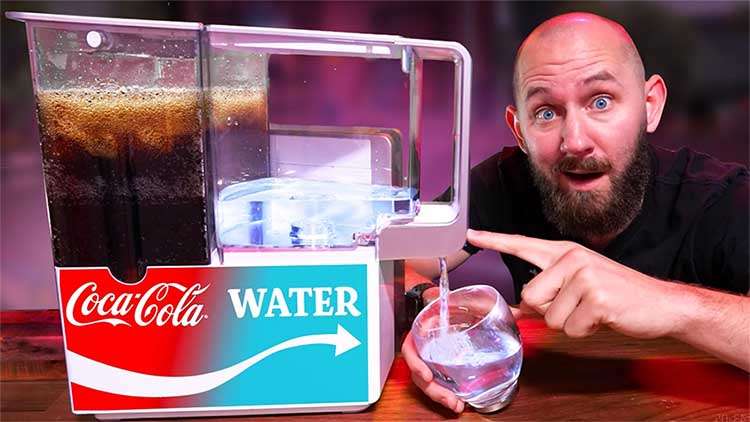
Is Charcoal Filtered Water The Healthiest Water To Drink?
Yes.
The charcoal filter process works by trapping bacteria and other harmful substances into its pores and keeping it there so that your water is purified.
 This is why charcoal water filters have superior adsorption properties that makes it a popular choice for water filtration.
This is why charcoal water filters have superior adsorption properties that makes it a popular choice for water filtration.
They are very good at removing bacteria and contaminants yet still leave the healthy nutrients behind.
 There are also several benefits of using a natural water filter method such as the possibility of making it yourself in an emergency situation.
There are also several benefits of using a natural water filter method such as the possibility of making it yourself in an emergency situation.
Using a carbon filter (another way to describe activated charcoal) is ideal for people that like great tasting fresh drinking water.
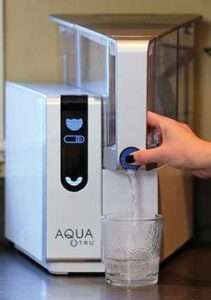 The market is full of many good quality charcoal filters of every type and for every purpose. Just make sure that what you buy is capable of removing the main contaminants in your home.
The market is full of many good quality charcoal filters of every type and for every purpose. Just make sure that what you buy is capable of removing the main contaminants in your home.
Find out what these are by using a water filter test kit to see what’s in your water.
If all of this sounds like too much hassle then just buy a whole house filter machine. Especially a good quality unit that will take care of anything that you throw at it.
AquaTru Water Filter | Berkey Water Filter |
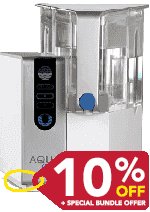 | 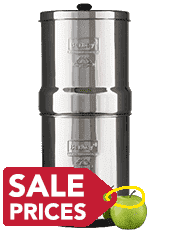 |
| - Arsenic: Approx 90% (unspecified). - Fluoride by 91.8% (WITHOUT extra filters). - Lead 97.5% - Benzene 99.9% - Chlorine 96.6% - Cysts 99.99% | - Arsenic by 99.9% (special filters required). - Fluoride by 99.9% (special filters required). - Lead 97.5% - Benzene 99.8% |
| Available in 1-size only. | Available in various sizes. |
| Plastic materials. | Metal & plastic materials. |
| Number of filters: 3 | Number of filters: 2 - 4 |
| Filter methods: Mechanical, Reverse Osmosis & Activated Carbon filters. | Filter methods: Black microporous-filters & white fluoride Filters |
| 4-stage filter process. | 2-stage filter process. |
| Holds a maximum water capacity of 3-quarts. | 2.25 Gallons |
| 45.7 x 45.7 x 38.1 cm | 19" High x 8.5" Diameter |
| System: 1 year limited warranty. | Filters: 2 years; System: 1 year. |
| Full Performance Data Sheet (AquaTru). | Berkey Contaminants List NSF/ANSI test results |
| SPECIAL OFFER? Yes, use code MRWATERGEEK  | SPECIAL OFFER? Yes, Big Berkey bundle sale |
 | |
Scientific References
Yatzidis, H. A convenient haemoperfusion micro-apparatus over charcoal for the treatment of endogenous and exogenous intoxicants, Proc. Eur. Dial. Transplant. Assoc., 1964, 1, 83-86.
Picchioni AL, Chin L, Laird HE. Activated charcoal preparations–relative antidotal efficacy. Clin Toxicol. 1974;7(1):97–108.
Neuvonen PJ, Elonen E. Effect of activated charcoal on absorption and elimination of phenobarbitone, carbamazepine and phenylbutazone in man. Eur J Clin Pharmacol. 1980 Jan;17(1):51–57.
Derlet, Robert W., and Timothy E. Albertson. “Activated Charcoal—Past, Present and Future.” Western Journal of Medicine 145.4 (1986): 493–496. Print.
Chandy, T., Sharma, C. P. Preparation and performance of chitosan encapsulated activated charcoal (ACCB) adsorbents for small molecules, J. Microencapsulation, 1993, 10, 475-486.
Adsorption of Fluoxetine HCl by Activated Charcoal Cooney, David O. et al. Journal of Pharmaceutical Sciences , Volume 86 , Issue 5 , 642 – 644

